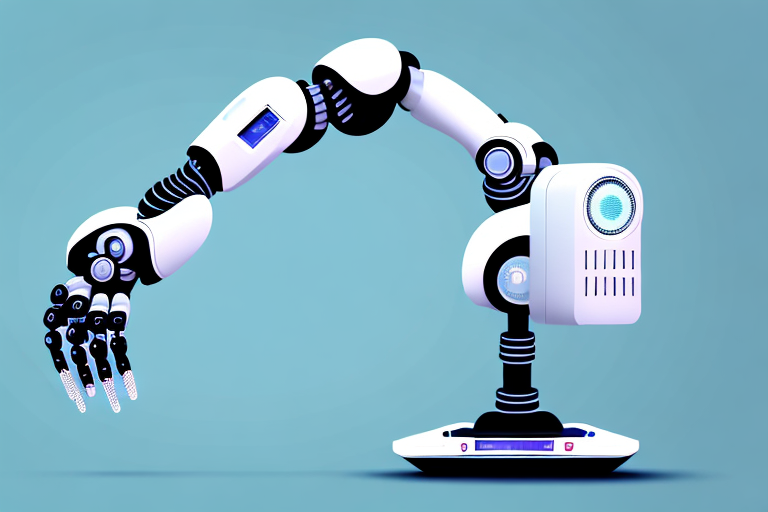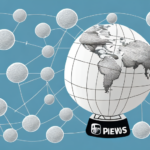Building and Managing E-Commerce Chatbots: A Comprehensive Guide
In the world of e-commerce, chatbots are revolutionizing the way businesses interact with customers. These AI-powered tools are capable of conversing with customers in a natural and intuitive way, providing a level of personalized service that was previously impossible at scale. In this comprehensive guide, we'll explore the importance of chatbots in e-commerce, the different types of chatbots available, and everything you need to know to build, manage, and optimize a successful chatbot for your e-commerce business.
The Importance of Chatbots in E-Commerce
One of the key benefits of chatbots in e-commerce is their ability to provide personalized recommendations to customers. According to a Salesforce report, 64% of consumers expect real-time assistance regardless of the channel they use. Chatbots can leverage customer data such as browsing history and purchase history to make personalized product recommendations, which can dramatically improve the customer experience and boost conversion rates. In addition to personalized recommendations, chatbots can also help customers with common queries and issues, such as tracking orders and troubleshooting product issues.
Another advantage of chatbots in e-commerce is their ability to handle a large volume of customer inquiries simultaneously. Unlike human customer service representatives, chatbots can manage multiple conversations at once, significantly reducing wait times for customers. This can lead to increased customer satisfaction and loyalty.
Furthermore, chatbots can be used to gather valuable customer feedback. By asking customers for their opinions and suggestions, chatbots provide businesses with insights into customer preferences and pain points. This information can be utilized to improve products and services, as well as to develop more effective marketing strategies.
Types of Chatbots
Rule-Based Chatbots
Rule-based chatbots use predefined rules and decision trees to guide their conversations with customers. They are simpler to build and manage, making them ideal for handling straightforward queries such as FAQs and order tracking.
AI-Powered Chatbots
AI-powered chatbots rely on natural language processing (NLP) and machine learning algorithms to understand and respond to customer queries. These chatbots offer a more sophisticated and natural customer experience, capable of handling complex interactions and learning from each conversation to improve over time.
Hybrid Chatbots
Hybrid chatbots combine both rule-based and AI-powered approaches. They use predefined rules for basic queries and switch to AI-powered responses for more complex issues, offering the best of both worlds by ensuring seamless customer interactions while maintaining ease of management.
Purpose-Based Chatbots
Chatbots can also be categorized based on their primary function:
- Customer Service Chatbots: Primarily used to answer frequently asked questions and provide basic support.
- Sales and Marketing Chatbots: Engage customers, provide product recommendations, and facilitate transactions.
Building Your Chatbot
Planning Conversational Flow
Planning your chatbot's conversational flow is crucial for creating a seamless customer experience. This involves mapping out various conversation paths and ensuring the chatbot can handle each scenario effectively. Understanding your customer's needs and anticipating their questions and issues are essential steps in this process.
Designing the Chatbot's Tone and Personality
The tone and personality of your chatbot should align with your brand's voice and values. Whether it's friendly and conversational or professional and informative, maintaining consistency in tone throughout the conversation helps in building trust and enhancing the customer experience.
Designing UI/UX for Your Chatbot
The design of your chatbot's user interface (UI) and user experience (UX) plays a critical role in its success. Best practices include:
- Keeping the UI simple and uncluttered.
- Using clear calls-to-action and easy-to-understand prompts.
- Employing natural language that mirrors customer speech patterns.
- Ensuring the chatbot is responsive and proactive in interactions.
Choosing the Right Platform
When selecting a platform to build your chatbot, consider factors such as ease of use, scalability, and integration capabilities with other e-commerce tools. Popular platforms include:
Additionally, evaluate the level of customization each platform offers. Some platforms provide extensive customization options, allowing for more flexibility in designing and programming your chatbot, while others may have limitations. The availability of support and resources, such as documentation and tutorials, is also an important consideration.
Integrating Your Chatbot with E-Commerce Tools
Integrating your chatbot with other e-commerce tools and platforms, such as your website, customer relationship management (CRM) software, and marketing automation tools, is essential for maximizing its potential. This integration streamlines the customer experience and creates a more cohesive service environment.
One key benefit of integration is the ability to provide personalized recommendations. By analyzing customer data and purchase history, your chatbot can suggest products or services tailored to individual preferences, enhancing the customer experience and increasing sales.
Optimizing Chatbot Performance
Developing Conversational Scripts
Conversational scripts guide your chatbot's interactions with customers. When developing these scripts:
- Maintain a balance between providing helpful information and avoiding information overload.
- Use a friendly and approachable tone.
- Personalize interactions by addressing customers by name and tailoring responses based on their history.
Regularly reviewing and updating conversational scripts based on customer feedback and common queries ensures the chatbot remains effective and relevant.
Training Your Chatbot to Understand Customer Intent
Training your chatbot to accurately understand and respond to customer intent is crucial. Employ machine learning algorithms to analyze customer queries and predict appropriate responses. Incorporate feedback loops by allowing customers to rate responses, which helps in refining the chatbot's performance over time.
Implementing Natural Language Processing (NLP)
Natural Language Processing (NLP) enhances your chatbot's ability to comprehend and respond to customer queries naturally. Effective NLP implementation involves:
- Using accurate and comprehensive training data.
- Continuously refining algorithms to improve performance.
NLP enables chatbots to handle complex queries and provide personalized responses, reducing the workload on human customer service representatives and improving overall customer satisfaction.
Testing and Debugging Your Chatbot
Regular testing and debugging are essential to ensure your chatbot functions as intended. Utilize various testing methods, including:
- Manual testing to identify and fix issues.
- Automated testing for efficiency.
- User testing to gather real-world feedback.
Continuous monitoring using analytics tools helps in gaining insights and optimizing your chatbot's performance.
Measuring Success with Metrics and Analytics
To evaluate the effectiveness of your chatbot, track key metrics such as:
- Engagement rates
- Conversion rates
- Customer satisfaction scores
Using these metrics, you can identify areas for improvement and make data-driven decisions to enhance your chatbot's performance and the overall customer experience.
Enhancing Customer Engagement
Improving customer engagement with your chatbot involves:
- Personalizing interactions based on browsing and purchase history.
- Using engaging prompts and calls-to-action to encourage conversations.
- Ensuring the chatbot is available 24/7 for customer support.
These strategies help in fostering a more interactive and satisfying customer experience.
Leveraging AI and Machine Learning
To further enhance your chatbot's performance, leverage advanced AI and machine learning techniques. This can include:
- Integrating new data sources for more comprehensive insights.
- Utilizing sophisticated NLP algorithms for better understanding.
- Experimenting with deep learning techniques to improve response accuracy.
Continuously refining and optimizing your chatbot with these technologies ensures it remains competitive and provides an exceptional customer experience.
Future Trends in E-Commerce Chatbots
As chatbot technology evolves, several trends are shaping the future of e-commerce chatbots:
- Voice-Activated Chatbots: With the rise of smart devices, voice-activated chatbots are becoming more prevalent, offering hands-free customer interactions.
- Augmented Reality (AR) and Virtual Reality (VR): Integrating AR and VR can create immersive shopping experiences, allowing customers to visualize products in real-time.
- Advanced AI Algorithms: Future chatbots will leverage more sophisticated AI to understand and respond to customer queries with even greater accuracy and personalization.
Staying abreast of these trends will help businesses maintain a competitive edge and continue to meet evolving customer expectations.
Conclusion
Building and managing an e-commerce chatbot can be a complex and challenging task, but by following the best practices and guidelines outlined in this guide, you can create a chatbot that provides a personalized and intuitive customer experience. Whether you're just starting out with chatbots or looking to optimize an existing one, the key is to stay focused on your customers' needs and priorities, and to continually refine and improve your chatbot's performance to stay ahead of the competition.






















